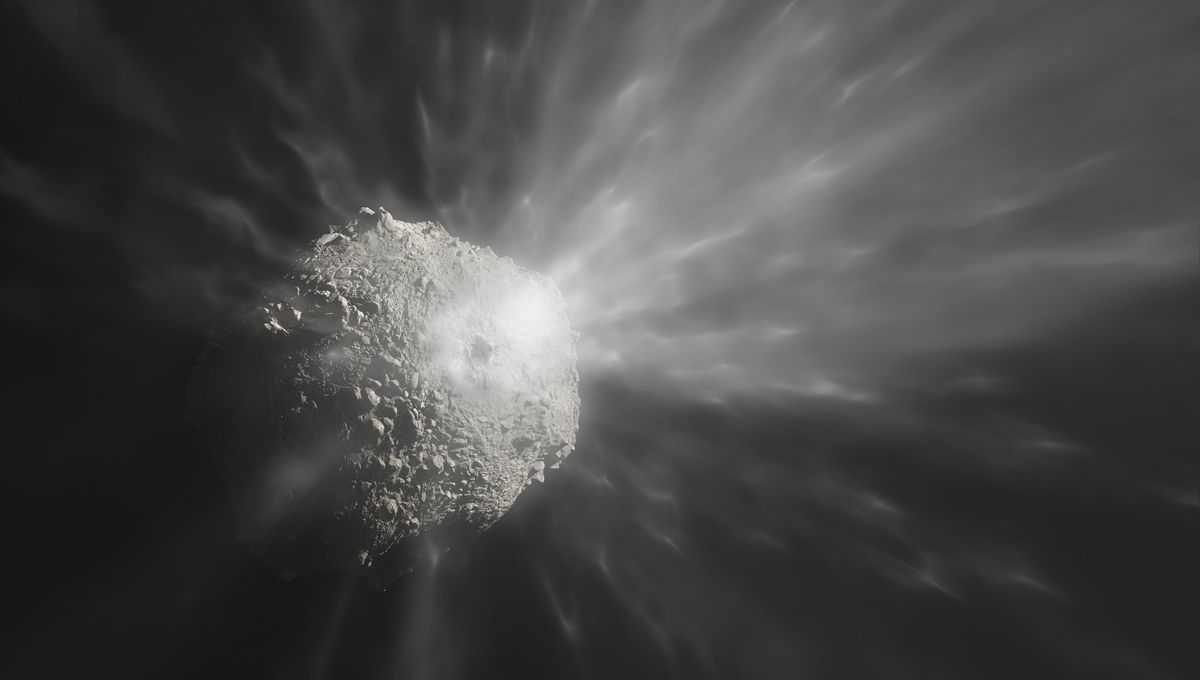
Last September, DART hit asteroid Dimorphos, the small companion of asteroid Didymos. The impact was a test of planetary defense, showing that we can truly shift the orbit of a celestial body. But it was also a chance to study what an impact on an asteroid looks like. And astronomers did not waste time in pointing some of the most powerful telescopes at it.
Using the Very Lage Telescope, part of the European Southern Observatory (ESO), astronomers were able to spot features, composition, and peculiarities of the dust released in the impact. And it gave them a great deal of information about what happens when asteroids collide.
“Impacts between asteroids happen naturally, but you never know it in advance,” the lead author of one of two new studies, Cyrielle Opitom, an astronomer at the University of Edinburg, said in a statement. “DART is a really great opportunity to study a controlled impact, almost as in a laboratory.”
This research team followed the evolution of the dust cloud from mere hours after the impact to a month later. At first, the ejected cloud was bluer in color than the asteroid, suggesting that it was made of finer particles, but as time went by and it expanded, the team saw structures develop such as clumps, spirals, and long tails. And as more time went by, they appeared redder and redder, suggesting large particles were the main components of these.
The team also looked for water ice from the asteroid – there was little hope of finding it as they tend to be very dry, but it was important to check. They also looked for any residual fuels from DART, but it impacted the asteroid almost empty.
“We knew it was a long shot,” Opitom explained, “as the amount of gas that would be left in the tanks from the propulsion system would not be huge. Furthermore, some of it would have traveled too far to detect it with MUSE by the time we started observing.”
The other research team looked at the polarization of light from the cloud of debris following the impact. Polarized light is light with a specific orientation (the electromagnetic fields of it oscillate on a specific plane) and the atmosphere and surface of a celestial body can change and polarize the light of the Sun. Or clouds of particles from a collision.
“Tracking how the polarisation changes with the orientation of the asteroid relative to us and the Sun reveals the structure and composition of its surface,” lead author Stefano Bagnulo, an astronomer at the Armagh Observatory and Planetarium in the UK, explained.
Following the impact, the scientists noticed that the level of polarization decreased but the brightness of the system increased, suggesting that the material ejected might have been more pristine and brighter, coming from the subsurface so not previously exposed to solar radiation. Or it could be a question of size.
”We know that under certain circumstances, smaller fragments are more efficient at reflecting light and less efficient at polarising it,” explained Zuri Gray, a PhD student also at the Armagh Observatory and Planetarium.
This is just the beginning of this data analysis. More work is currently being done to analyze what the ESO observatories have seen in this fantastic event.
The paper led by Opitom is published in Astronomy & Astrophysics, and the work led by Bagnulo in The Astrophysical Journal Letters.
Source Link: Spirals, Tails, And Reflective Dust Were Released In The DART Asteroid Collision